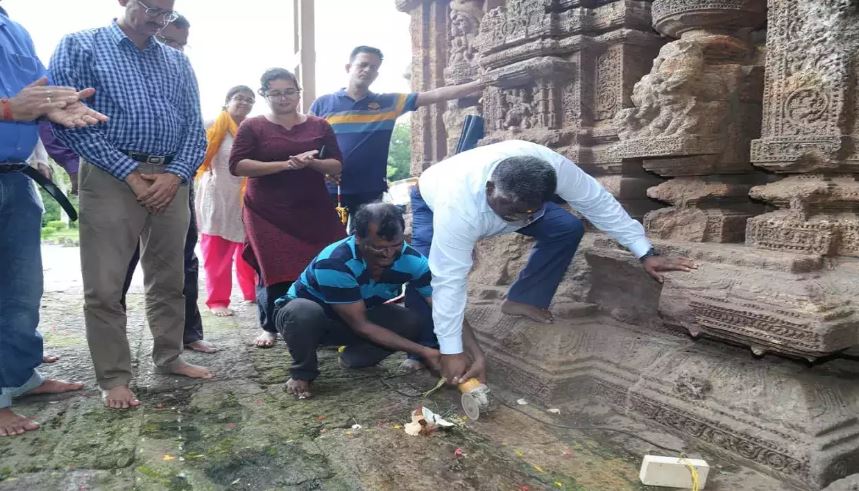Sand from the towering Jagamohan of the 13th-century Sun Temple at Konark will finally be removed, 119 years after it was shut by the British. The Archaeological Survey of India (ASI) started building a mechanical working platform on the western side of the building on Thursday to make the sand removal operation easier.
The ‘Antarala,’ a vestibule in the shape of an intermediate chamber connecting the ‘garbhagruha’ to the’mandapa’ of the temple, will be covered by the enormous and sturdy working platform. It will take a very long time to complete. According to ASI sources, the entire sand evacuation project could take at least three years. The British filled Jagamohan with sand, the volume of which is still unknown, over the course of three years, from 1901 to 1903.
It would take two to three months to build the mechanical working platform. After that, in January of the following year, work will start to remove stones from the temple’s western side that are over the “Antarala.” According to Superintending Engineer of Bhubaneswar Circle, ASI, Arun Malik, the stones would be removed in order to manually dig a 6 feet by 5 feet pit or tunnel where the British had previously filled the monument with sand.
“Before that, we will install a structural health monitoring system in the monument to examine the vibrations and tilt. Two core drillings will then be carried out, one at the bottom of the “Antarala,” another at the spot where the British used to fill in sand, to enable us better understand the internal brickwork and create a tunnel within the building, the official said.
On the premises of the temple, which is the only World Heritage Site in Odisha, ASI authorities had a groundbreaking ceremony earlier in the day. According to Malik, the amount of sand inside the Jagamohan currently extends up to 19.8 metres (64.9 feet) from the bottom of the 39.6 metres (130 feet) high monument, and the sand has settled.
The window will be built 5 to 7 feet below the level at which the topmost sand has settled. Sand will be removed from this area in the first stage to build an interior concrete platform that will be supported by supports from the interior cavity. The platform will be removed, and we’ll gradually descend using conventional conservation techniques, he continued.
Malik stated that the Central Building Research Institute (CBRI), situated in Roorkee, had performed tests which provided assurance that the structure is safe enough for this task.
Several preservationists of cultural heritage have praised the decision. Anil Dey, author of “The Sun Temple of Konark” and a fervent admirer of the temple, had previously stated to the media that the large amount of sand inside Jagamohan is settling, causing great horizontal pressure and other issues.
The removal of sand from the Jagamohan has been demanded for more than ten years, according to INTACH State Convenor AB Tripathy. “This is the finest news for Odisha-specific archaeology in India overall. Many international specialists have recommended removing the sand over the past three decades,” he stated. According to CBRI estimates, the Jagamohan will weigh a massive 46,000 tonnes at the top of the plinth.


